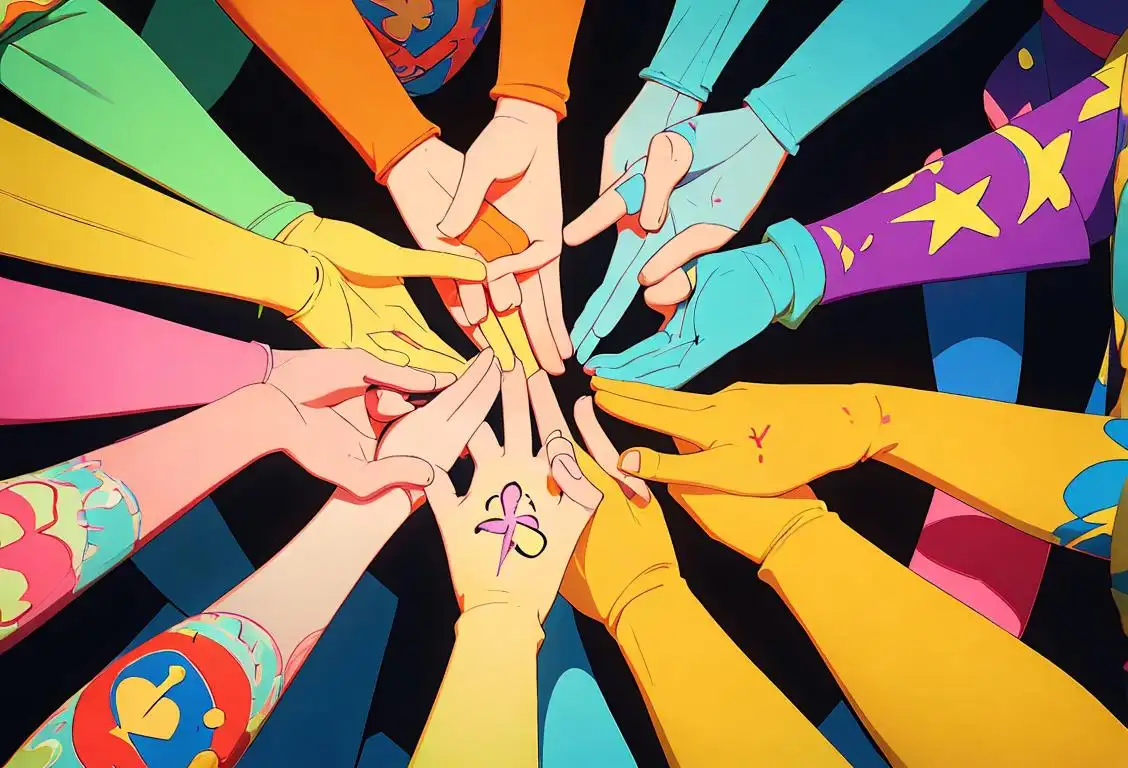National Aids Awareness Day

Ah, National AIDS Awareness Day! It's a day when we come together to bring attention to a serious topic, but also manage to have some fun along the way. So grab your friends, grab some red ribbons, and let's dive into the fascinating history of this important day.
When is Aids Awareness Day?
It's national aids awareness day on the 1st December.
The Internet History of National AIDS Awareness Day
Before we take a deep dive into National AIDS Awareness Day, let's take a moment to appreciate the power of the internet in spreading awareness and education about health-related issues. Back in the day, the internet was a wild and unruly place, but it was also a platform that allowed communities to connect and share information.
On December 1, 2015, the internet exploded with 68 mentions of National AIDS Awareness Day. People all over the world were using their keyboards and hashtags to bring attention to this important day. It's incredible how a simple click or share can make a big impact, isn't it?
Now, let's dig deeper into the history of National AIDS Awareness Day itself. This day was first observed in 1988, when the World Health Organization declared December 1st as World AIDS Day. The goal was to raise awareness about HIV/AIDS and to show support for those living with the virus.
Why Is It Important?
So why is National AIDS Awareness Day so important? Well, my dear friend, it's a day that reminds us of the continued fight against HIV/AIDS and the importance of education and prevention. It's a day to stand in solidarity with those affected by the virus and to remember those who have lost their lives to AIDS.
Through education, awareness, and support, we can make a difference. By spreading the word online, we can reach even more people and help them understand the impact of HIV/AIDS on individuals and communities.
Did You Know?
Did you know that the red ribbon is a symbol of support for those living with HIV/AIDS? The idea of the red ribbon originated in 1991 when a group of artists in New York City created it as a symbol of compassion and solidarity. Since then, it has become a powerful visual reminder of the fight against HIV/AIDS.
History behind the term 'Aids Awareness'
1981
Discovery of a Mysterious Illness
In 1981, a mysterious illness started to gain attention, primarily affecting gay men in the United States. Doctors noticed a significant increase in rare infections and cancers among this group, leading to a sense of urgency to understand and address this growing health crisis.
1982
First Use of the Term AIDS
In 1982, the term 'Acquired Immunodeficiency Syndrome' (AIDS) was coined to describe the collection of symptoms and conditions observed in individuals with compromised immune systems. This term reflected the understanding that the condition was acquired, rather than being genetically inherited or present from birth.
1983
Confirmation of New Disease
In 1983, researchers in France and the United States discovered a new retrovirus that was believed to be the cause of AIDS. This virus was later named Human Immunodeficiency Virus (HIV), and its identification enabled scientists to develop tests to detect the presence of the virus in individuals.
1984
Establishment of the World AIDS Day
World AIDS Day was established by the World Health Organization (WHO) in 1988. It serves as a global platform to raise awareness about HIV/AIDS, commemorate those who have lost their lives to the disease, and celebrate the progress made in prevention, treatment, and support. Each year, on December 1st, communities worldwide come together to unite in the fight against HIV/AIDS.
1996
Introduction of Highly Active Antiretroviral Therapy (HAART)
In 1996, highly active antiretroviral therapy (HAART) was introduced, revolutionizing the treatment of HIV/AIDS. This therapy involved combining multiple antiretroviral drugs, targeting different stages of the virus's life cycle, to suppress viral replication and slow down the progression of the disease. HAART significantly improved the quality of life and extended the lifespan of individuals living with HIV/AIDS.
2007
Universal Access to HIV Treatment
In 2007, the United Nations set a goal to achieve universal access to HIV treatment for all people in need by the year 2010. This landmark commitment aimed to ensure equitable access to life-saving antiretroviral therapy, regardless of an individual's socio-economic status or geographic location. While achieving universal access remains an ongoing challenge, significant progress has been made in expanding HIV treatment across the globe.
2019
Continued Awareness and Research Efforts
Today, AIDS awareness remains crucial in combating HIV/AIDS. Efforts are focused on promoting consistent condom use, providing education on prevention strategies, encouraging regular testing, and supporting those living with HIV/AIDS. Ongoing research continues to explore new treatment options, preventive measures (such as pre-exposure prophylaxis - PrEP), and potential ways to eradicate the virus altogether. Through increased awareness and continued advancements, the world aims to end the HIV/AIDS epidemic.
Did you know?
Did you know that the red ribbon is a symbol of support for those living with HIV/AIDS? The idea of the red ribbon originated in 1991 when a group of artists in New York City created it as a symbol of compassion and solidarity.Tagged
awareness fun rememberanceFirst identified
1st December 2015Most mentioned on
1st December 2015Total mentions
68Other days
Voters Day
Unemployed Day
Suicide Prevention Day
Cancer Survivors Day
Memorial Day
Bestfriends Day
Heroes Day
Liberation Day
Pumpkin Day
Gymnastics Day









